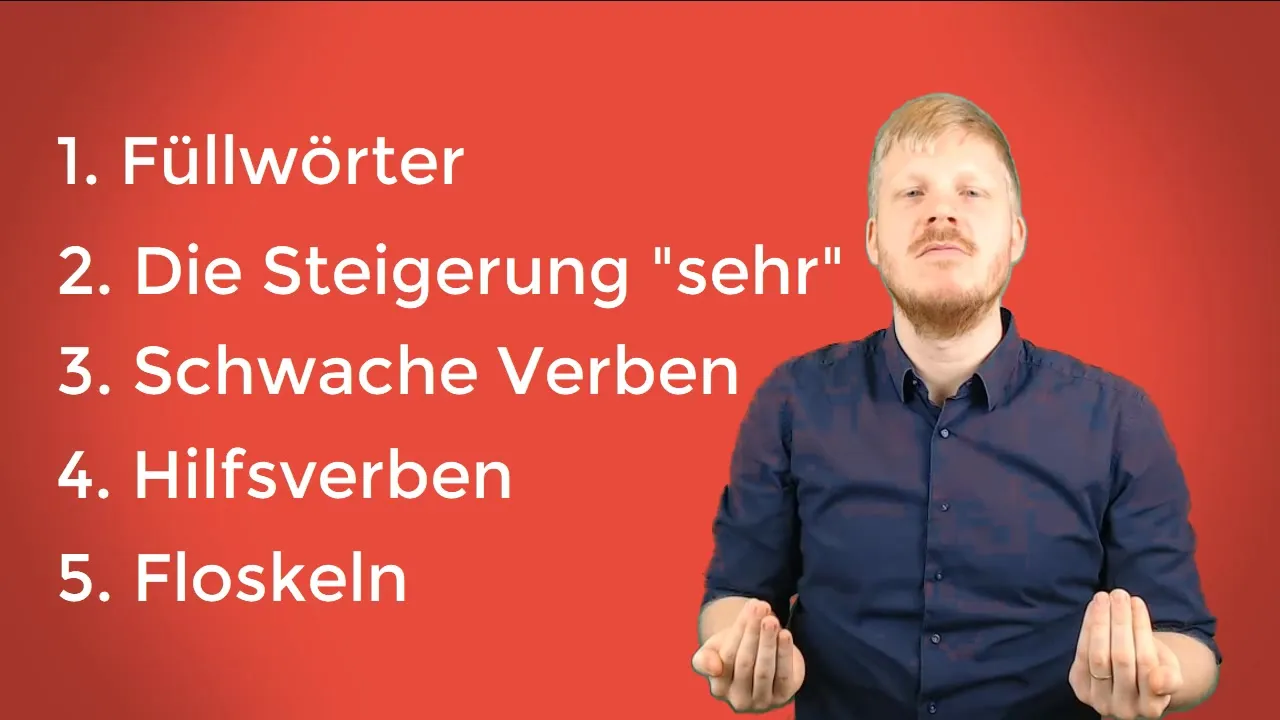Texts are not just simple arrangements of words; they are messages that should be conveyed with clarity and precision. Have you ever read a text and wondered what the author really meant to say? Often, this is due to the so-called textual ballast. In this tutorial, you will learn how to eliminate redundant and confusing words from your own texts to improve your communication.
Key Insights
The use of redundant words and phrases weakens the impact of your text. By consciously paying attention to vocabulary and expression, you can better reach your readers and leave a more professional impression. Go through the most common "filler words" and "auxiliary verbs" and discover how you can replace them with clearer formulations.
Step-by-Step Guide
To reduce your textual ballast, follow this structured guide.
Identify Filler Words
First step: Pay attention to your use of filler words such as "so," "somehow," "definitely," or "just." These words are often unnecessary and detract from the clarity of your text. Attempting to enrich your sentences with these terms often only leads to making your content vague.
Avoid Weak Verbs
In the next step, you should avoid weak verbs such as "do" or "perform." These words contribute little to imagery and create a distance between the reader and the content. Instead, use strong, concise verbs that directly describe the action. "You do an examination" becomes "You examine," giving your text more dynamism.
Reduce Auxiliary Verbs
Auxiliary verbs are also a source of textual ballast. Words like "must," "should," "may," "let," or "will" can weaken direct expression. Instead of "It must be carried out," prefer to write: "We carry this out." Remember to stay active, and your writing style will greatly benefit.
Eliminate Unnecessary Phrases
Many phrases, such as "long story short" or "at this point, I would like to say," contribute little to clarity. They only create confusion and delay the actual message. Stick to the golden rule: "Clarity over embellishments." Be concise and get straight to the point.

Emphasize Strong Sentence Structures
Now, turn to the structure of your sentences. When your sentences are weakened by passive constructions and unnecessary hedging, it becomes difficult for your readers to follow the text. Try to write actively and use synonyms that strengthen your statements when needed.
Create a List of Filler Words
A practical tip: Create a list of commonly used filler words and save it in a document. To assist you, you can highlight these words in the autocorrect options of your word processing program. Insert a specific symbol, such as three stars, to remind you to avoid using these words.
Avoid Complicated Words
Sometimes, words that you may consider intelligent or sophisticated can actually have the opposite effect. They are also called "poison words." These words can make your text more complex than necessary and confuse readers. But don't worry, there are alternatives that are much more effective.
Summary
In this guide, you have learned how important it is to rid your text of excess baggage. You have identified the most common filler words, weak verbs, and unnecessary phrases and found ways to reject them. By applying these techniques, you will notice an improvement in the quality of your texts and increased interest from your readers.
Frequently Asked Questions
How can I check my texts for filler words?Use digital tools or have someone proofread who can provide feedback.
What are "poison words"?These are words that may seem appropriate but unnecessarily complicate your text.
How can I improve my sentence structure?Try to write actively and choose your verbs carefully.
What are good alternatives to "just" or "somehow"?Use clear and concise expressions that directly represent your point.
Can I track my progress in writing?Yes, keep a list of words you frequently use and work on reducing them.


